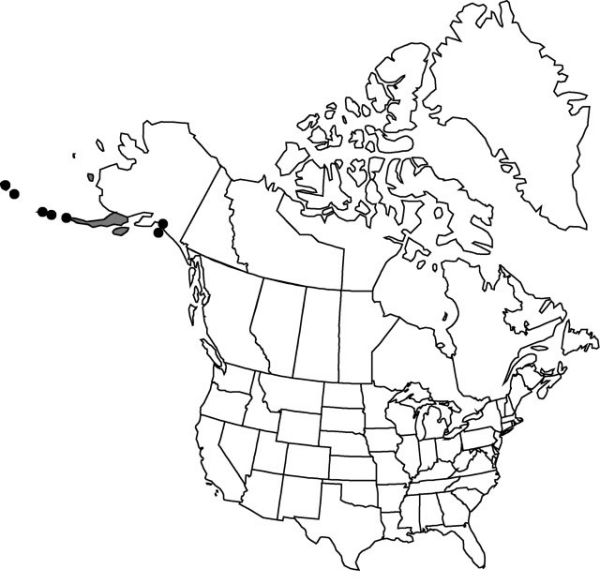Dactylorhiza aristata
Nom. Nov. Gen. Dactylorhiza, 5. 1962.
Plants 5–40 cm. Leaves 2–5; blade often purple-spotted or suffused with purple, proximal blade 3–18 × 1–6 cm. Inflorescences: floral bracts lanceolate, 15–50 × 5–15 mm, the larger often suffused with purple, extending well beyond flowers. Flowers magenta, pink, or white; sepals prominently oblique and erect at base, upwardly curving forward or downward, ovate-lanceolate, 9–11(–13) × 3–6 mm, awned; petals ovate-lanceolate, 6–9 × 3–4 mm, awned; lip often magenta- to red-spotted, suborbiculate to obcordate, 8–12 × 8–12 mm, shallowly 3-lobed or entire, tip of middle lobe apiculate; spur 5.5–7.5 mm, 1/2–2/3 as long as ovary. 2n = 40, 42.
Phenology: Flowering late spring–mid summer.
Habitat: Moist open tundra, meadows, bogs
Elevation: 0–800 m
Distribution

Alaska, e Asia (Russian Far East).
Discussion
Dactylorhiza aristata var. kodiakensis has been separated primarily on the basis of its being uniform instead of variable like the typical variety (C. A. Luer 1975); supplementary characters all partially overlap. While this variety is not recognized here, variability in the Alaskan Fischer’s orchids merits detailed taxonomic study.
Selected References
None.